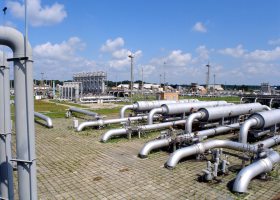Why Tanzania Should Turn Natural Gas Into Diesel
If you are skeptical, technology has made it possible to convert natural gas and coal into high-quality liquid transportation fuel such as diesel, kerosene, lubricants oil and jet fuel just to mention a few. This technology is known as Gas-To-Liquid (GTL).
Gas-To-Liquid (GTL) has been around for years. It enacted in the 1920s by the German scientists named Franz Fischer and Hans Trapsch when they had figure out the best way to convert coal into oil materials like diesel and kerosene.
The technology become the most important source of energy in German that provides fuel to keep transportation going in the country.
Gas-To-Liquid (GTL) worked dramatically not only with coal and natural gas, applying heat and pressure and convert natural gas into oil products such as diesel, engine oil and so on.
With no oil but huge quantities of natural gas assets, it is a reasonable option for Tanzania to give the gas-to-liquid technology a chance.
Tanzania does not produce oil, is a net importer of the oil-related product such as diesel, lubricant oil.
With huge gas reserves in the country (about 57 trillion cubic feet of gas gross recovered). Transforming natural gas into transportation fuel is the best way to sustain our oil-reliant way of life.
The gas-to-liquid process will help Tanzania to become self-sufficient and reduce or stop relying on importing the transportation fuel from the foreign country.
And use our natural gas rather than buying the fuel from other countries.
It will help Tanzanians, consumers, to buy cheap fuel at the pump.
Another reason to encourage the use of the gas-to-liquid process is the liquid fuels derived from the technology has fewer impurities such as sulfur and Nitrogen, than fuel made from crude oil. Because it derived from the cleanest fossil fuel-natural gas.
Tanzania should look up to South Africa.
Tanzania has to learn from South Africa and follow in its footsteps.
When state-owned south Africa coal, oil, and gas corp(ltd) created in the 1950s, South Africa had little oil, but great volume of coal. To come out ahead, they converted coal into liquid fuels that power cars. aircraft, and tankers.
Five years later, It was pumped the first coal derived from oil. Today, South Africa supply 29% of the country transportation fuel.
Also Read. Tanzania’s Thirst For Gas
Many Multinational Oil Companies Are Looking At The Gas -To -Liquid Technology.
The gas-to- liquid process increases popularity day by the day. Many companies such as Exxon Mobil, BP, Conoco and Royal Dutch Shell Plc have examined the technology for quite some time. And they built gas-to-liquid plants in several regions.
In 2014, Shell signed an agreement to carry out a feasibility study for the gas-to-liquid plant in Mozambique.
And now Shell is constructing $19 gas-to-liquid plant in Qatar.
How The Gas-To-Liquid Technology Work.
Natural gas is extracted from the ground, afterward, they add oxygen to the extracted natural gas.
This form combination of hydrogen monoxide, hydrogen, and carbon dioxide.
With the presence of catalyst often cobalt, it subjected to high pressure and temperature.
Cobalt is used as a catalyst to speed up the reaction.
This led to the production of wax. To turn into usable form wax processed at the refinery where heat and pressure is used to split the hydrocarbon into various oil-related products,
By Hussein Boffu
Hussein.boffu@tanzaniapetroleum.com
+255655376543




